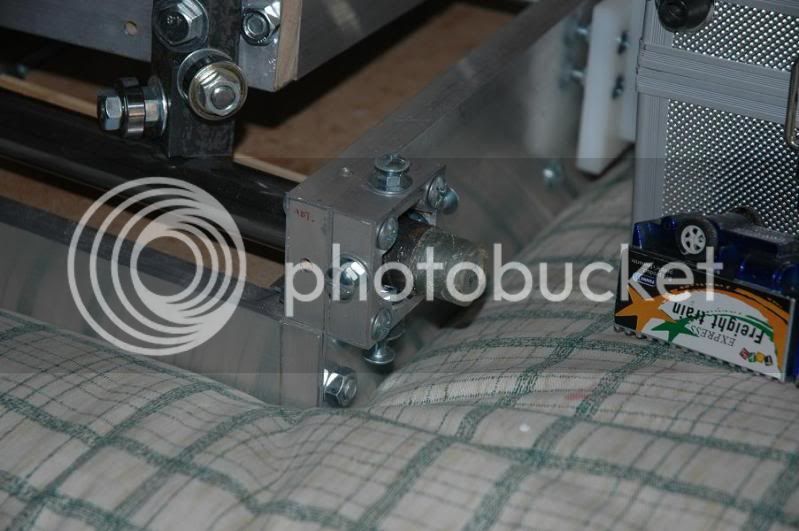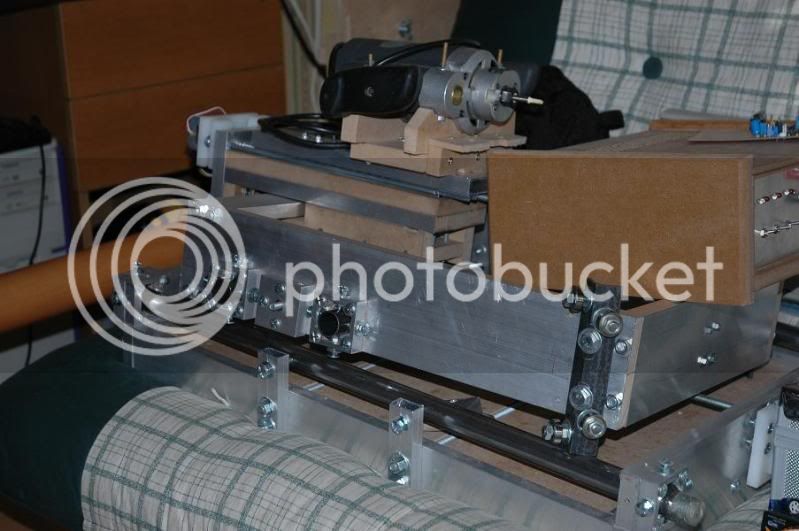ok, doubling the rail has been done to minimise flex.
then again, you are doubling the alingment issue. you need to align 4 parallel rods. trickier than 2 !
in terms of costs, i am not sure you would be saving much.
I'd say not my configuration of choice, but then , i havent tried it.
here are a couple of pix from my 1st machine taken 1h ago.
it shows the state its in !
also, what i wanted to show is the "bodging" i implemented to conteract flex.
because i have 45deg bearings, they not only push down on the rods, but also outwards. so i stuck some side supports (2 per side) connected by long threads across the machine. they are adjusted to that they push just enough on the rods.
finally, a close up of the rods.
they started a thick walled steel hollow tubes. they were not strong enough. so i stuck a M20 threaded bar inside, and filled the gap (1mm) with resin. the result is a pretty strong and heavy looking bar.
well.. not strong enough ! they flexed much less, but still too much. It did not take much force to twist the gantry on the rods, which means trouble when machining harder woods.
anyway, regarding the motors, they are rated a 350Ncm..if you cannot visualise torque, imagine a 35Kg (5-6 stones) load onto a cable, on the shaft of the motor (1cm). the motor will hold in.
anything lighter, the motor will lift.
basically, unless you use a lever of some sort, you will not stop the motor turning with your fingers alone.
you probably need 10% of this with a mdf/ply machine. unless you have a 35Kg router !



































